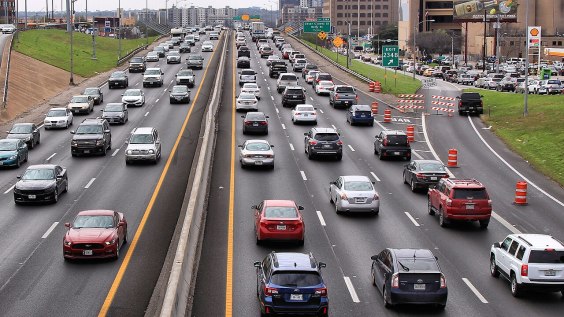An unprecedented planning effort is currently underway to redesign Market Street, and transform it into a grand car-free thoroughfare in 2015, when it's scheduled to be repaved. But why should we have to wait that long for a car-free Market Street? There is a growing momentum to do more aggressive trials that would inform the Better Market Street planning process, and divert more private automobiles off Market to improve conditions for people who ride transit, walk or bike.
"I do think that now is the time to accelerate our efforts to improve Market Street," said Board of Supervisors President David Chiu.
The District 3 supervisor and mayoral candidate introduced a resolution [pdf] yesterday that calls on the SFMTA to implement more "near-term pilot projects, including increased private automobile diversions, to speed up transit along Market Street while improving the safety and comfort of people walking and biking, and supporting the local commercial and cultural function of the street."
His comments at Tuesday's Board of Supervisors meeting followed a q-and-a session with Mayor Ed Lee, who was asked by Chiu if he supports more trials to improve Market, and specifically what "on the ground pilot programs should happen soon while the long-term planning process goes on."


Lee said he is "supportive of initial trials and projects" and that the SFMTA is working on more experiments, including allowing all-door boarding on surface transit vehicles from Van Ness to Market (50 percent of Muni delays on Market are due to slow boarding), "new and expanded bicycle treatments," and "improved crosswalk conditions" for pedestrians, especially at 6th Street, which has been identified as one of the city's most dangerous intersections for walking.
"The staff of the MTA is getting a real important message from both the leadership of City Hall and the leadership of MTA that it's time to move forward more creatively and in a timely way," said Leah Shahum, the executive director of the San Francisco Bicycle Coalition. "I think this is pretty significant."
Further details and a timeline for more improvements were not released, but Lee said any new trials would have to involve "input from multiple stakeholders." The talk concerning reducing more private autos centers mostly around preventing turns onto Market Street, and not the cross traffic, which accounts for 85 percent of the private auto traffic on Market. Calming the cross traffic is definitely another concern among advocates, though.
Since the SFMTA implemented the required right turns at 10th and 6th streets, which are now permanent, conditions for transit, pedestrians and bicyclists have improved. The green protected bike lanes along stretches of Market also provide bicyclists with some dignified space, but it certainly isn't enough.
The initial trials have also helped lead to a shift in public opinion about Market Street. A majority of the top mayoral candidates now support a car-free Market Street, and many residents and merchants who were originally opposed to the trials have come around to supporting them.
"I've not heard a lot of negative feedback to date, so that's a good sign," said Ken Cleaveland of the Building Owners and Managers Association of San Francisco, who supports more trials on Market Street, as long as people are allowed "to get accustomed to it gradually."
While the two required right turns "did reduce traffic a little bit, they haven't fixed the problems that I see every day on Market Street," said Tom Radulovich, the executive director of Livable City. "There is a fairly small number of autos, and especially autos trying to turn right on Market Street, that plug up that right lane for buses and bicyclists trying to move through."
Fifth, 4th and 3rd Streets and New Montgomery are congested during peak hours and Radulovich suggested prohibiting turns at those intersections, or "just making them free of private cars."
At Montgomery, frustrated afternoon drivers will often turn left, and get onto 2nd Street to cut over to the Bay Bridge. That often creates a line of cars stuck at the intersection, bringing Muni traffic to a halt in both directions (sometimes all the way to 6th Street), and making conditions difficult for bicyclists and pedestrians.
One solution being talked about is to deploy a team of traffic control officers to the intersection to prevent cars from blocking the box, or to just ban the turn entirely, and make the last block of 2nd Street at Market open to northbound cars only.
Aside from reducing more private auto traffic, other ideas for speeding Muni include painting the transit lanes red, and extending the transit-only lane eastbound beyond 5th Street.
"Given these opportunities, we need more pilots now," said Chiu. "I believe a viable vision for the future of Market Street is a world class avenue that draws its success from the huge number of people it attracts through transit and taxis, on foot and on bicycle, and without private automobiles except for delivery vehicles."





